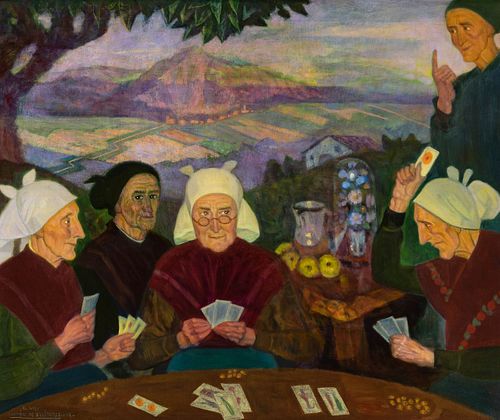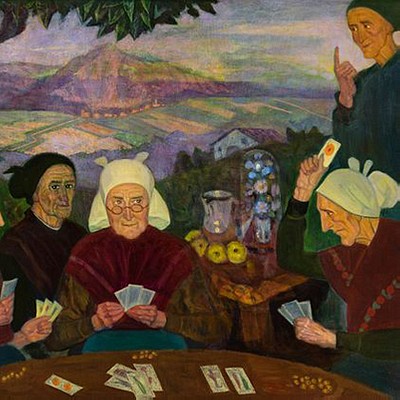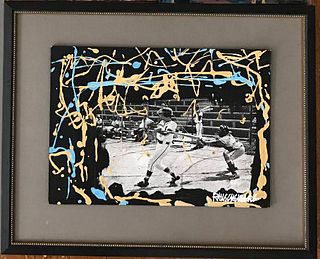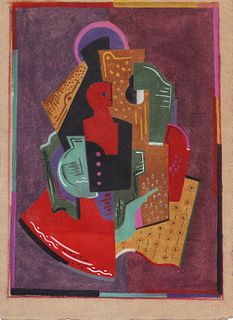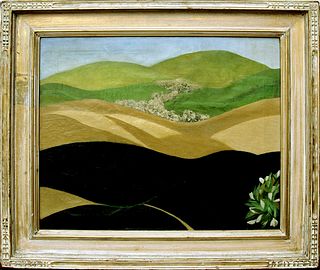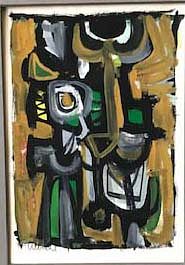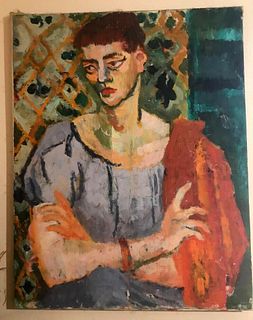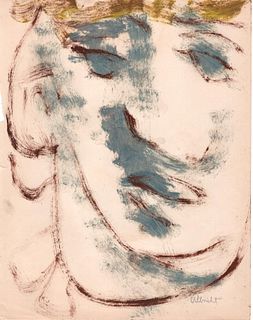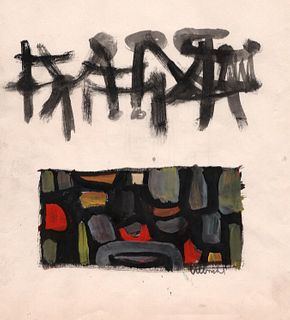RAMÓN DE ZUBIAURRE AGUIRREZÁBAL (Garay, Vizcaya, 1882 - Madrid 1969). "The julep", 1966. Oil on canvas.
Lot 92
About Seller
Setdart Auction House
Carrer Aragó 346
Barcelona
Spain
Setdart Subastas was born in 2004 and is currently the first online art auction in Spain with solidity, prestige and reliability guaranteed by our more than 60,000 users. Setdart has a young, dynamic and enterprising team ready to successfully manage the purchase and sale of art works through custom...Read more
Estimate:
EUR€30,000 - EUR€40,000
$32,258.06 - $43,010.75
Absentee vs Live bid
Two ways to bid:
- Leave a max absentee bid and the platform will bid on your behalf up to your maximum bid during the live auction.
- Bid live during the auction and your bids will be submitted real-time to the auctioneer.
Bid Increments
| Price | Bid Increment |
|---|---|
| EUR€0 | EUR€10 |
| EUR€200 | EUR€25 |
| EUR€500 | EUR€50 |
| EUR€1,000 | EUR€100 |
| EUR€3,000 | EUR€200 |
| EUR€5,000 | EUR€500 |
| EUR€10,000 | EUR€1,000 |
| EUR€20,000 | EUR€2,000 |
| EUR€50,000 | EUR€5,000 |
About Auction
By Setdart Auction House
Dec 14, 2021
Set Reminder
2021-12-14 08:00:00
2021-12-14 08:00:00
America/New_York
Bidsquare
Bidsquare : 19th & 20th Century Fine Art
https://www.bidsquare.com/auctions/setdart-auction-house/19th-20th-century-fine-art-7992
Gaudi, Sorolla, Torres Garcia, Maclet, TSUGUHARU FOUJITA, Benjamin Palencia Setdart Auction House sofia@setdart.com
Gaudi, Sorolla, Torres Garcia, Maclet, TSUGUHARU FOUJITA, Benjamin Palencia Setdart Auction House sofia@setdart.com
- Lot Description
RAMÓN DE ZUBIAURRE AGUIRREZÁBAL (Garay, Vizcaya, 1882 - Madrid 1969). "The julep", 1966. Oil on canvas. Signed, dated and titled in the lower left corner. Work reproduced in color in: - "Ramón de Zubiaurre. The painter and the man", Takeshi Mochizuki, publications of the Diputación Foral del Señorío de Vizcaya, p. 189. This publication indicates that Ramón Zubiaurre exhibited the work at the Sala Toisón in Madrid, thus fulfilling the wish to be judged by his peers at the age of 75. - "Basque painters and sculptors of yesterday, today and tomorrow", p. 273. Provenance: Formerly Luis Benito del Valle collection (Bilbao). Measurements: 68 x 63 cm; 95 x 110 cm (frame). Basque traditions were a recurring theme in the production of Ramón de Zubiaurre, who sought to document the ethnographic values of his region, as was the practice of regionalist painters in the rest of Spain at the time. In the exceptional canvas in question, Zubiaurre immortalizes a group of village women playing a lively game of julep. In spite of the apparent banality of the theme represented, Zubiaurre recreates an interesting link between all the characters that, far from seeming casual, becomes a declaration of intentions. And the fact is that the game is not limited to the cards resting on the table, or to those that the women with white cloths on their heads play between their hands, but, behind them, there are two other female figures, accomplices in the game. This time with black cloths, both women observe the cards of the players. To the right of the composition, standing to control all the movements, a villager indicates to her ally in front of her to watch her movements, while she looks back at her. Behind her, another villager in black watches the play. The defiant gaze of the central figure, who has put on her glasses so as not to lose any detail, and the figure who at that precise moment throws her card, complete a fascinating game that, beyond the cards, is extrapolated to reality. The narrative of the scene is reinforced by the double still life exercise on the right of the painting. Behind this eloquent genre scene, we see an imposing landscape dotted with a village and a hamlet, worked with a very varied palette in which green tones predominate, very elaborate and varied. The painter plays with the intensity and contrasts of light to construct the space, and attenuates the colors in the undulating mountains in the background, reflecting the humid atmosphere that dominates the landscape. Brother of Valentín de Zubiaurre, also a painter and also deaf and mute like him, he always maintained a close relationship with his brother, and in fact both began their careers hand in hand with his sister Pilar, who was in charge of selling his paintings and organizing numerous exhibitions, both in Spain and abroad, in the United States, Mexico, Argentina, Peru, Chile, Germany and other countries. Between 1903 and 1912 he received a scholarship from the Diputación de Vizcaya, which allowed him to devote himself fully to painting. From the beginning he will be closely linked to the National Exhibitions of Fine Arts held in Madrid, as well as to the cultural life of the Spanish capital. In fact, he studied at the Royal Academy of San Fernando, and in 1905 he finished his studies and moved to Paris to complete his training. He finally returned to Madrid, settling with his brother. In 1918 he was appointed a member of the Hispanic Society of America in New York, and in fact he remained in the United States between 1940 and 1951. He is currently represented in the Reina Sofia Museum in Madrid, the Chicago Museum, the National Museum of Fine Arts in Buenos Aires, the Fine Arts Museums of Bilbao and Alava, the San Telmo Museum in San Sebastian and the Provincial Council of Gipuzkoa, among other collections.
- Shipping Info
-
In-house shipping available. Please inquire at admin@setdart.com.
-
- Buyer's Premium



 EUR
EUR CAD
CAD AUD
AUD GBP
GBP MXN
MXN HKD
HKD CNY
CNY MYR
MYR SEK
SEK SGD
SGD CHF
CHF THB
THB